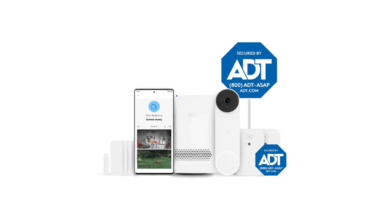7 Ways to Stay Motivated and Engaged in Virtual Learning

In the digital age, virtual learning has become an indispensable part of our educational landscape. It offers flexibility and convenience, allowing students to learn at their own pace and from anywhere in the world. However, staying motivated and engaged in a virtual learning environment can be challenging. Distractions abound, and the absence of face-to-face interaction can make it hard to stay focused. In this article, we will explore seven effective ways to help you stay motivated and engaged in your virtual learning journey.
Virtual learning
Virtual learning offers numerous advantages, but maintaining motivation is crucial to success. The following strategies can help you make the most of your virtual learning experience.
Set Clear Goals
Setting Clear Goals in Virtual Learning
When embarking on a virtual learning journey, setting clear and well-defined goals is fundamental to your success. Virtual learning provides the flexibility to structure your educational path, but without concrete objectives, it’s easy to lose direction and motivation. Here’s how setting clear goals can empower your virtual learning experience:
- Direction and Purpose: Clear goals give your learning a sense of direction and purpose. They help answer fundamental questions like “What do I want to achieve?” and “Why am I pursuing this course?” Knowing the answers to these questions keeps you on track.
- Motivation: Goals are powerful motivators. They give you something to strive for, making it easier to stay engaged with your coursework. The satisfaction of achieving each goal provides a sense of accomplishment.
- Progress Tracking: Setting milestones and objectives allows you to track your progress effectively. You can measure how far you’ve come and how close you are to achieving your ultimate goal. This can boost your confidence and motivation.
- Time Management: Goals help with time management. When you have clear objectives, it’s easier to allocate your time efficiently. You can prioritize tasks, making sure you’re working on what’s most important at any given moment.
- Adaptation: Setting goals doesn’t mean they are set in stone. You can adjust your goals as you progress and as your interests and priorities evolve. This adaptability ensures that your learning remains meaningful and relevant.
- Achievement Satisfaction: Completing a course or achieving a specific grade can be immensely satisfying. Your goals are not just about the destination but also the journey. Celebrate your achievements along the way.
How to Set Clear Goals in Virtual Learning
- Define Short-term and Long-term Goals: Start by distinguishing between short-term and long-term goals. Short-term goals can be daily or weekly objectives, while long-term goals may relate to your entire course or program.
- Be Specific: Your goals should be specific and measurable. Instead of saying, “I want to do well in this course,” specify, “I aim to achieve an A grade in the next exam.”
- Realistic and Achievable: Set goals that are realistic and attainable within your capabilities. While ambition is good, setting unattainable goals can lead to frustration.
- Set a Timeline: Attach a time frame to your goals. Knowing when you want to achieve them adds a sense of urgency and commitment.
- Write Them Down: Put your goals in writing. This creates a tangible reminder and commitment to your aspirations.
- Review and Adjust: Regularly review your goals and make adjustments as needed. Learning is dynamic, and your goals should adapt to your progress.
Read More: The Best Programming Languages to Learn
Create a Dedicated Learning Space
Designate a specific area in your home for learning. Having a dedicated space can help you mentally switch into study mode. Ensure it’s organized, comfortable, and free from distractions. A well-organized workspace can boost your productivity and focus.
Stay Organized
Being organized is essential for virtual learning. Maintain a schedule or a to-do list to track your assignments, deadlines, and lectures. This will prevent last-minute rushes and reduce stress. Use digital tools like calendars and task management apps to keep everything in order.
Take Regular Breaks
In the pursuit of effective virtual learning, one often overlooked but crucial aspect is the art of taking regular breaks. While the concept may seem counterintuitive to the goal of productivity, it’s actually a powerful technique for enhancing motivation and engagement. Let’s explore why taking regular breaks is essential and how it can transform your virtual learning experience.
The Importance of Breaks
- Mind Rejuvenation: Virtual learning can be mentally taxing, with hours spent in front of screens absorbing information. Regular breaks provide your mind with the essential pause it needs. They allow you to rejuvenate and return to your learning tasks with a refreshed perspective.
- Memory Consolidation: Our brains process and consolidate information during rest. Taking breaks between study sessions helps your brain solidify what you’ve just learned. This means you’ll remember the material more effectively.
- Preventing Burnout: Prolonged, uninterrupted study sessions can lead to burnout and decreased motivation. Breaks prevent the accumulation of mental fatigue, allowing you to stay energized and focused throughout your learning.
The Pomodoro Technique
One popular method for taking regular breaks is the Pomodoro Technique. It involves breaking your work into intervals, typically 25 minutes of focused work followed by a 5-minute break. After completing four Pomodoro sessions, take a longer break of around 15-30 minutes. This technique has gained popularity for its effectiveness in maintaining productivity while ensuring that you don’t overstrain yourself.
Practical Tips for Effective Breaks
- Physical Activity: Use your break time to move around. Stretch, walk, or do a quick exercise. Physical activity can stimulate blood flow and increase your energy levels.
- Mindful Breaks: Instead of scrolling through social media or watching videos, practice mindfulness during your breaks. Deep breathing exercises or a brief meditation session can help you stay relaxed and focused.
- Snack and Hydrate: Have a healthy snack and drink water during your breaks. Proper nutrition and hydration play a significant role in maintaining focus and energy.
- Disconnect: If possible, disconnect from screens during your breaks. Engage in non-screen activities to rest your eyes and mind.
- Social Interaction: Use break time to connect with friends or family. A quick chat can provide a mental break and boost your mood.
Incorporating Breaks into Your Virtual Learning Routine
It’s crucial to plan your study sessions with breaks in mind. Determine the length and frequency of your breaks based on your preferences and concentration span. Experiment with different intervals to find what works best for you.
Social Interaction
Engage with your peers and instructors. Virtual learning may lack face-to-face interactions, but it doesn’t mean you can’t connect with others. Participate in online forums, discussion boards, and group projects. Building a support network can make the learning experience more enjoyable and motivating.
Reward Yourself
Set up a reward system for yourself. After completing a challenging assignment or achieving a particular goal, treat yourself to something you enjoy. Rewards can be powerful motivators, helping you stay on track and complete your coursework with enthusiasm.
Read More: How to Use the Metaverse for Education
Conclusion
In the ever-evolving landscape of education, virtual learning has emerged as a powerful tool, offering unprecedented flexibility and accessibility. However, with great freedom comes the responsibility of staying motivated and engaged throughout your virtual learning journey.
Throughout this article, we’ve explored seven effective ways to ensure your success in virtual learning. From setting clear goals that provide you with direction and motivation to creating a dedicated learning space, staying organized, taking regular breaks, engaging with peers, and rewarding yourself for achievements, these strategies offer a holistic approach to staying motivated and engaged.
Virtual learning is not just about attending classes or completing assignments; it’s about personal growth, skill development, and academic success. By applying the methods discussed in this article, you can harness the full potential of virtual learning.
Remember that while virtual learning offers incredible opportunities, it also demands discipline and self-motivation. Embrace the freedom it provides and, at the same time, accept the responsibility to set and achieve your educational objectives.
FAQs
1. Is virtual learning as effective as traditional classroom learning?
Virtual learning can be just as effective as traditional learning when approached with dedication and the right strategies.
2. How can I avoid distractions during virtual learning?
Creating a dedicated learning space, staying organized, and using time management techniques can help minimize distractions.
3. What are the advantages of virtual learning?
Virtual learning offers flexibility, convenience, and the ability to learn at your own pace.
4. How can I stay motivated when learning from home?
Setting clear goals and rewarding yourself for achievements are effective ways to stay motivated.
5. Is virtual learning suitable for all types of courses?
Virtual learning is suitable for a wide range of courses, but it may not be the best option for hands-on or lab-based subjects.







